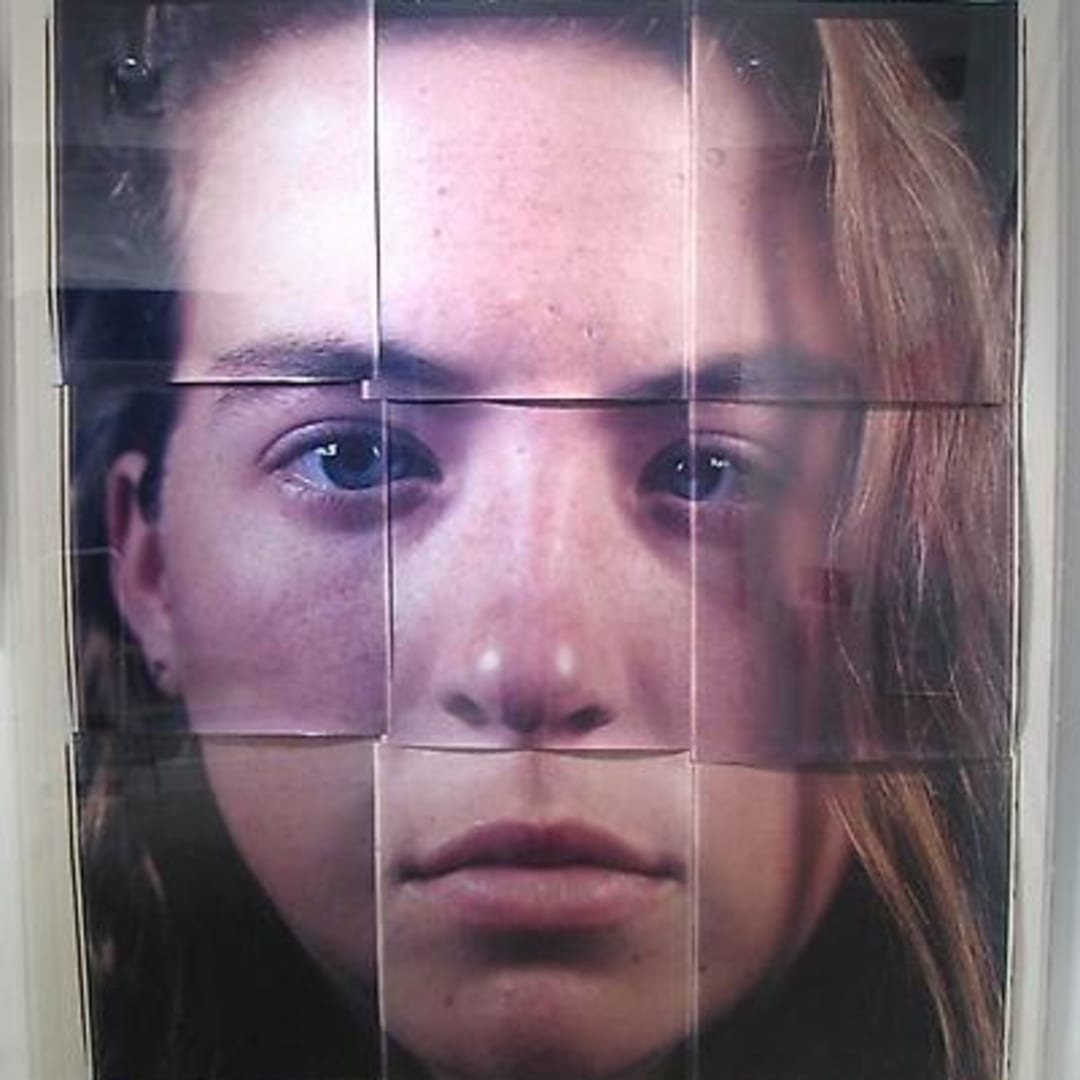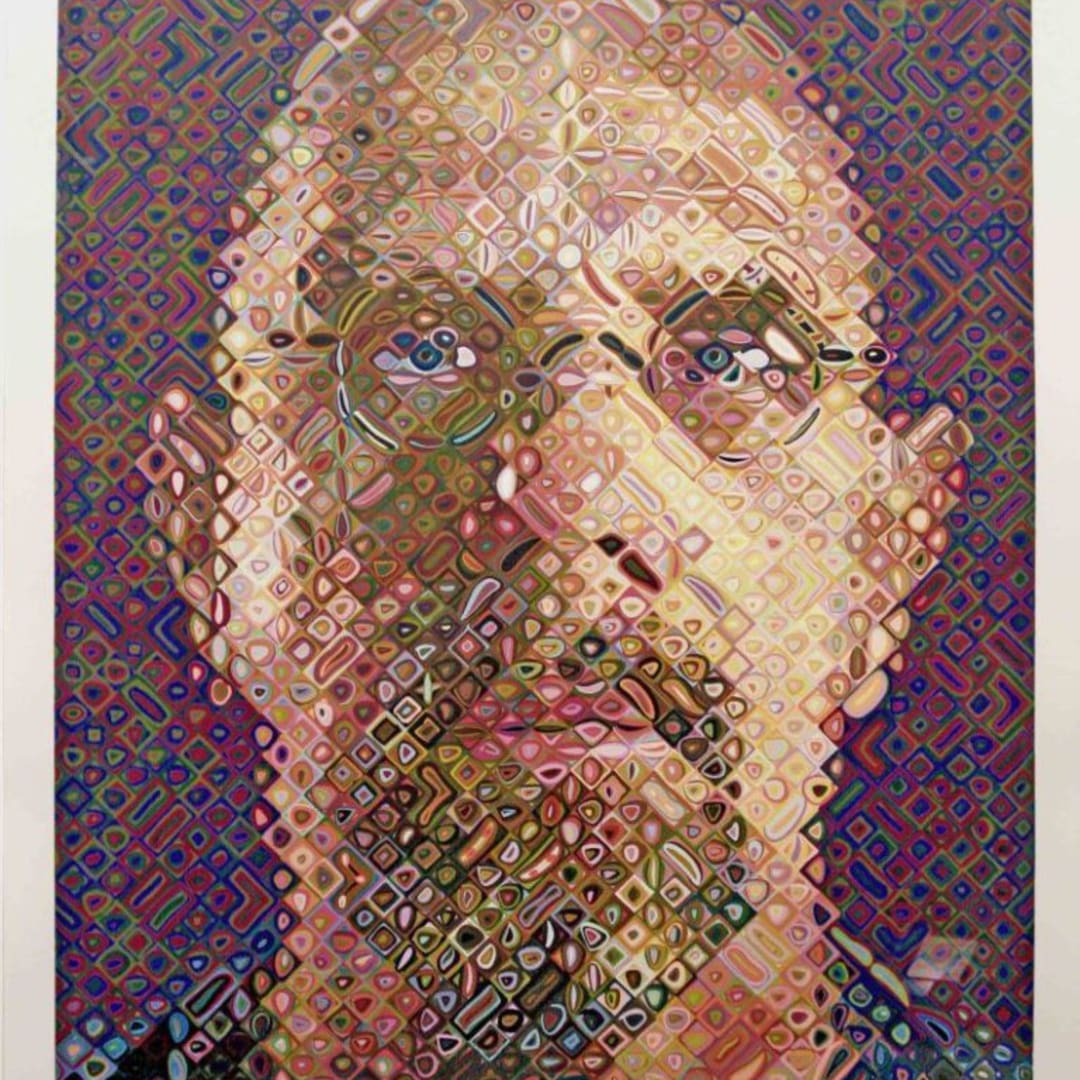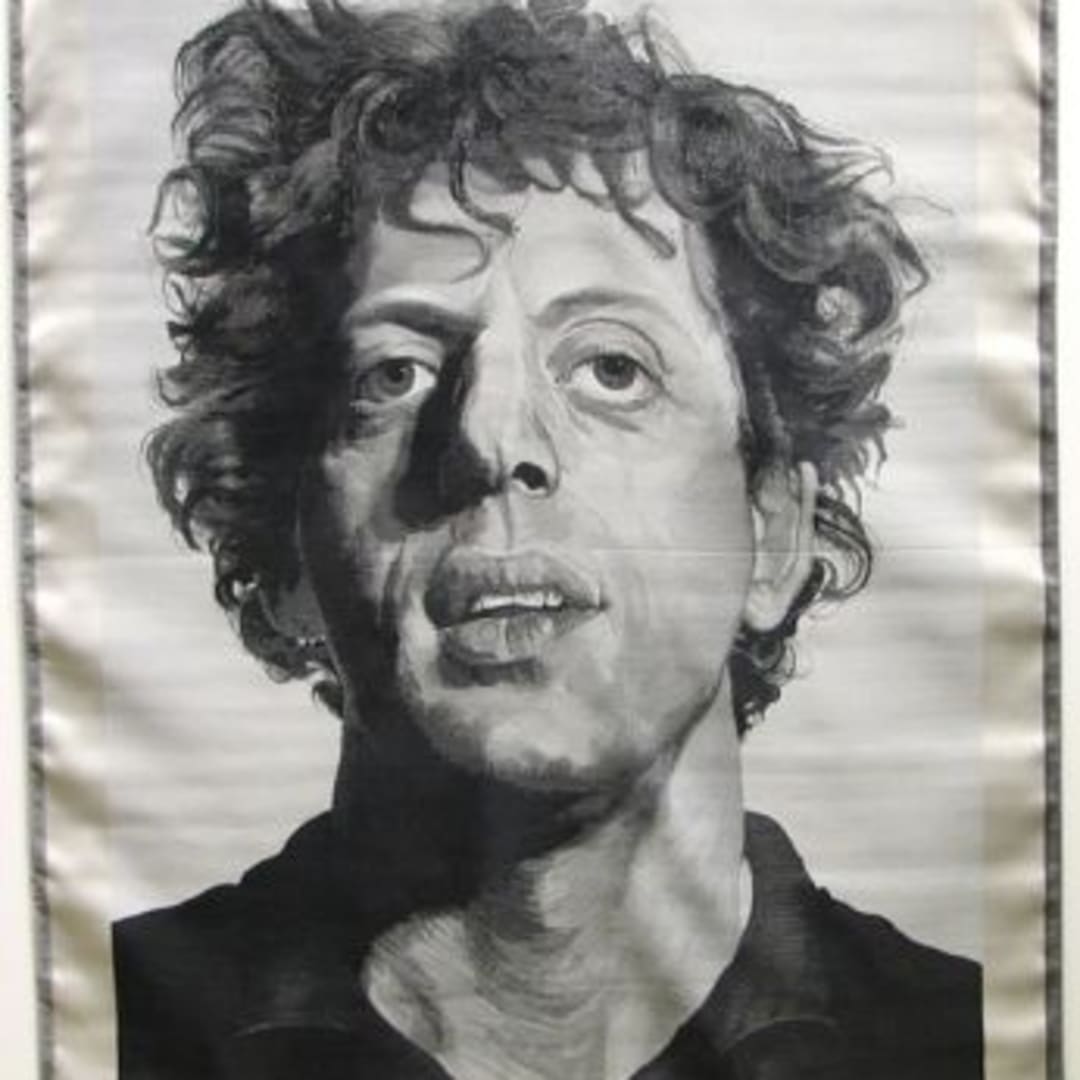Viewing the works of American Contemporary Artist Chuck Close is much like traveling to a familiar place, but taking a new route every time. The artist, who is best known for his large scale photo mosaic portraits, continues to be one of the more fascinating New York artists living today. Like all masterful artists, Chuck Close has perfected a signature style that’s unmistakably his. For decades, Close has been creating portraits using grids that organize every segment – allowing him to apply fine interpretive embellishments – while maintaining photorealistic effects on a large scale. The result is “picture perfect” portraits from a distance that reveal incredible shapes, colors and textures when inspected closely.
One of Chuck Close’s favorite subjects, friend and composer Philip Glass, is featured in a limited edition silk tapestry currently for sale at our Boca Raton gallery. The tapestry showcases all that is captivating within this highly acclaimed large scale rendering of Philip Glass – yet another version of original that Close first created in 1969. Over the years, Chuck Close has continued to find new media and processes for interpreting this image of Glass. From a single photograph shot in the late sixties, Close has perpetuated an iconic series spanning decades. The unruly hair, heavy eyes, pouty lips and contoured face of Philip Glass are so filled with character, the subject appears to have unlimited potential for further study. Chuck Close admits that he has considered retiring the image, yet it always seems to resurface. After more than 100 studies of the image, in 2005, Philip Glass returned the favor, composing a 15-minute song entitled A Musical Portrait of Chuck Close.
Another Chuck Close work that’s available at VFA is a rare unique portrait entitled Georgia 9-Part. This work serves as a microcosm of the artist’s intricate grid works. In viewing this instance of Georgia, it’s quite simple to see how the artist prefers to deconstruct the various zones of his subject – and upon admiring this creation, one can’t help but ponder how many other variations Chuck Close may have considered to represent her in this moment. Georgia, Close’s daughter appears at various times throughout the artist’s body of work, and of course, in a wide array of media. Using a Polaroid camera contributes much to the nature of this work as well. The familiar qualities of this breed of instant print provides us with the certain expectations about the format of the image’s instant framing – and in manipulating these nine images, Chuck Close preserves this quality for viewer as well – allowing us to see this composite as one large Polaroid print.
Some of the Close’s most popular works include his signature self-portraits, which provide introspection about this absorbing artist. Like a number of Post-War artists influenced by the likes of Pop Art masters such as Warhol, celebrity is piece of the puzzle. For Chuck Close, who has had his share of celebrity subjects − including President Bill Clinton in 2006 – his self portraits now carry the weight of celebrity subject as well. The 2007 Self Portrait signed edition screenprint for sale at Vertu Fine Art is among the finest produced. Created by way of the diagonal grid process for which Close is famous, this work consists of sublime shapes, colors and hues, permitting the owner to spend unlimited hours engrossed in its detail. Works such as this contribute to Chuck Close’s placement among those who comprise our nation’s collection of great Contemporary Artists.
If you are a Chuck Close collector, please visit us at our Boca Raton gallery and please contact us if you require assistance in sourcing a particular work.




